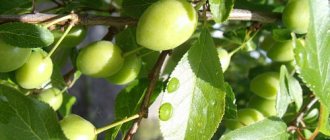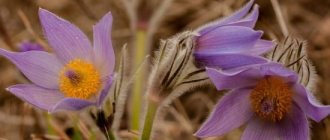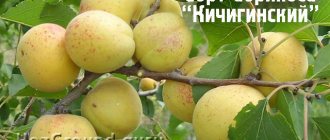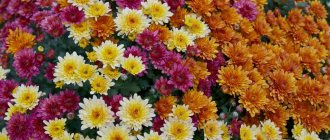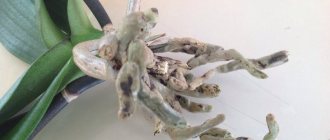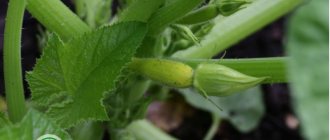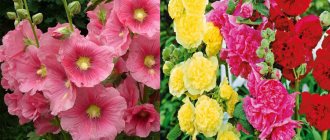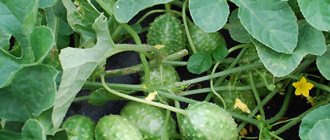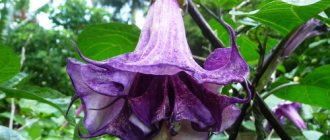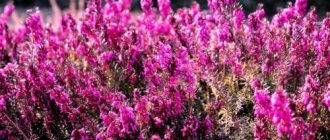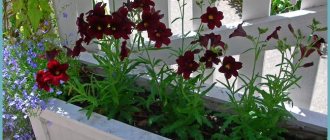Eschinanthus belongs to the Gesneriev family. The name from ancient Greek sounds like “distorted flower”. Many have heard the popular name - “lipstick flower”. Such names reflect the unusual, inverted shape and bright color of the flower. In this article we will look at the basic requirements for caring for aeschynanthus at home, and also describe the main methods of propagating this flower.
Botanical description
This plant belongs to the evergreen herbaceous elifites of the Gesneriaceae genus. It grows on trees (phorophytes), but does not feed on their sap. Shoots (like a vine) weave around the trunk and branches, water and nutrients enter through the roots. Under natural conditions, it loves bright places on rocks , hills, and river banks in India, China, Indochina, the Malay Archipelago, Nepal, Vietnam, Sri Lanka, Thailand, and the Solomon Islands. Several varieties have been found in Borneo and the Philippines.
Thin, branched branches can grow up to a meter; there are species with climbing shoots and subshrubs.
Elliptical leaf plates with a length of 10-12 cm by 3-4 cm are fleshy, with smooth edges and short cuttings, pointed ends, located on the shoots in pairs, opposite. The bright green surface of some species is covered with a pattern.
At the tips of the shoots, sparse clusters of peduncles with inflorescences in the form of brushes of elongated “tubes” with five petals, reminiscent of lipstick tubes with a two-lipped bend (“hood”), are formed. They are yellow at the base, the petals are red, and the ovary in the middle is white. The bowl at the base is dark burgundy, covered with small white “hairs”.
In residential premises, aeschynanthus are grown as hanging flowers (in flowerpots or baskets) and in the form of an elegant shrub. In favorable conditions they bloom several times a season.
What does die Ampel mean in translation?
Wicker potHanging vase
When purchasing, keep in mind that density is achieved by planting several seedlings in one pot. Young aeschynanthus branch poorly even with regular pinching of shoots. In single flowers, the maximum level of decorativeness is achieved after 3 years. After a couple of years, the shoots begin to become bare from below.
Features of Eschynanthus
Eschynanthus is an epiphytic plant growing on tree trunks, phorophytes. However, the plant does not feed from the phorophyte on which it grows. It comes from the forests of Southeast and South Asia: Indochina, India and China. The length of evergreen branches can vary from 0.3 to 0.9 meters. Among the species of this genus there are specimens represented by subshrubs or hanging climbing branches. Under natural conditions, the flowers of this plant are pollinated by sunbirds with a thin and long beak. The branches are decorated with short-petioled, fleshy leaf blades.
Eschynanthus has become very popular among gardeners due to its spectacular rich green foliage, as well as beautiful orange or red flowers. The shape of the leaf plates is oval, with a pointed tip, they reach about 40 mm in width, and about 100 mm in length. Peduncles form at the tips of the branches, on which racemose inflorescences are formed. The color of the tube gradually changes; at the base it is yellow, and the edges of the petals are red. The opened flower is decorated with a white ovary tube that protrudes from the middle.
Varieties and photos
There are approximately 200 species of this plant; 15 hybrids are grown at home. Below are photos, names and descriptions of Eschynanthus varieties suitable for propagation and care at home:
Wonderful (Magnificent)
The most common variety is Beautiful (Magnificent), it is more often found in private collections than others. The length of the drooping stems is up to half a meter; they gradually become woody at the base. Dense fleshy foliage of the same tone, without a pattern, with a burgundy edging, length does not exceed 10 cm. The inflorescences are dense, tubular flowers are scarlet or pink-orange with a burgundy edging , up to 6 cm long.
Beautiful
The hybrid Beautiful is similar to Beautiful, but the raspberry-scarlet inflorescences, yellow in the middle, are larger and brighter, the leaves are larger (up to 12 cm long). In inflorescences there are up to 12 flowers. The stems grow up to half a meter and gradually become woody at the base. This feature does not allow beautiful to be grown as an ampelous plant (the formation of a bush is required). During flowering, bright inflorescences on a green background resemble fountains.
Marble
The Marble hybrid has flexible, long stems (up to 90 cm), variegated foliage reminiscent of marble. Light green stripes extend from the center to the edges and have a purple tint on the reverse side. The decorative value is determined by the waxy leaves, and not by the inconspicuous light green tube flowers with a brown tint. They are an exotic addition to the foliage hanging beautifully from planters. In the photo below is the Eschynanthus Marble variety:
Twister
Twister is often called curly because of its twisted shoots and waxy, bright, shiny leaves that curl inward. From a distance the bush resembles a wig with fancy curls . Red-orange flowers with a burgundy or purple tint are located not only at the ends of the shoots, but also in the axils of the foliage.
Mona Lisa
The Mona Lisa variety is pendant, not demanding to care for. Oval leaves of medium size, elongated, dark, with a shiny surface and a raised central vein. Ruby, burgundy-orange or crimson flowers are collected in dense brushes. The photo below shows Aeschynanthus Mona Lisa:
Caroline
Carolina's leaves are up to 9x6 cm, the calyxes of the inflorescences are burgundy, the flowers have an alizarin tint and a creamy throat. This is a compact flower, the peculiarity of which is the elevation of new leaves.
Rasta
The Rasta hybrid has relatively long shoots, round, dark, dense, waxy, glossy leaves. Inflorescences are formed not only at the tops, but also in the axils; tubular flowers are red or scarlet, widened in the upper part. The shoots are liana-like, so this variety is bred in hanging containers .
Firebird
The Firebird variety received its name due to the juiciness and radiance of the inflorescences in light green cups. The flowers have a yellow base, purple stamens, and long pistils. They look great against the backdrop of emerald foliage. Recently, hybrids with pink, purple, and multi-colored flowers have appeared. You can see what the Eschynanthus Firebird variety looks like in the photo below:
Non-standard way of growing
Recently, many plant growers have begun to experiment with the flower, growing it not as a representative of a hanging crop, but as an aeschynanthus bush (you will find the photo below). To support fragile stems, supports are used, which are installed during planting. The shape of the support can be absolutely any: lattice or circular. Aeschynanthus needs to be tied to a support, giving the branches the desired shape.
Care
In order for this flower to grow and bloom well at home, the conditions must be as close to natural as possible. Before buying an aeschynanthus for an apartment, house, or office, you need to realize that in the city problems can be caused by low humidity levels and temperature fluctuations. A flowerpot or bush will acquire a luxurious appearance only if several young plants are planted in the container.
Lighting
Although Aeschynanthus loves light, it should be diffused. In summer it is better to place the pot on the north side, the rest of the time on the east or west. If the only option is the south side, the “ fondant” on the windowsill should be placed in partial shade . The best option is away from the window.
In winter, additional lighting is required to even out conditions. It is important to remember that it is not advisable to move the plant during the formation of buds and during the flowering period. More than others, compliance with these conditions requires the Marble hybrid, on the foliage of which sunburn very quickly forms.
The room must be ventilated periodically, avoiding drafts.
Temperature
The average value (without differences) should be +20-25°C , so it is not recommended to take this flower outside even in summer.
It should not be placed near a window whose sashes are often opened. This can cause the soil to cool and leaves to fall. If the conditions are not met, the “fondant” grows slowly and does not bloom.
In order for the aeschynanthus to bloom in the spring, it needs to be provided with a temperature of 15-18 ° C and good lighting from early February to mid-March. Under such conditions, buds develop best. The temperature gradually rises to normal after the buds form.
Watering
For any tropical flower, the most important thing is a sufficient amount of moisture in the air. In summer, Eschynanthus loves warm rain, placement in a florarium or display case with a humidifier, on a tray with wet filler. For spraying, you should purchase a fine sprayer that allows you to create a semblance of fog. The foliage of this flower is capable of accumulating moisture, so the procedure is carried out once a day. In winter, spraying is replaced by placing it on a tray with expanded clay.
Expert opinion
Vera Ivanovna Sh
Since childhood, I have been interested in growing indoor flowers, then I decided to devote my life to landscape design and gardening.
“Fudge” is very sensitive to waterlogging and drying out of the substrate. Humidity should be moderate throughout the entire volume of the pot. Stress causes the top layer to become too dry. If half the volume is too dry, the “fondant” is perceived as a disaster.
This flower prefers frequent, moderate watering. Frequency and volume are adjusted according to the season. To prevent leaves from falling in winter, do not allow water to stagnate in the substrate. Therefore, the frequency of watering is reduced by half. Slight wrinkling of the lower leaves is allowed. This promotes the formation of buds.
After dormancy, the amount of watering increases gradually. Spraying is resumed after growth begins. The water used is soft and warm.
Top dressing
Eschinanthus do not tolerate organic matter (vermicompost preparations, biofertilizers). The best option is universal mineral compositions for flowering indoor plants .
The dose is 2 times less than specified in the instructions. Fertilizers are applied with water during irrigation. The first feeding is carried out immediately after the start of growth, repeated twice a month, and stops in September.
Transfer
This procedure causes stress for any plant. For Eschynanthus, the transshipment method is always used. Young flowers are replanted annually (preferably in spring, but also in summer), adults if necessary (when roots appear in the drainage holes). This plant is not fussy about the size of the pot; it can grow even in a cramped container.
When purchasing in a store, replanting is required. After the procedure, higher humidity and shading are required.
Priming
The soil needs to be created sufficiently loose, saturated with nutrients , capable of evenly distributing and retaining air and moisture. Most often, a universal soil mixture from the store is used, but perlite, fine expanded clay, and vermiculite are added.
If you have experience, you can prepare the soil at home by mixing it in the ratio 1x2x2x1:
- coarse river sand;
- peat;
- leaf humus;
- sphagnum moss.
It is advisable to also add a small amount of coconut fiber, charcoal, and crushed tree bark.
What kind of pot do you need?
For fudge, a low, wide pot is considered ideal. For an adult flower, it is important that the new container is 2 cm wider than the old one. A layer of drainage is always poured onto the bottom (minimum 2 cm).
Trimming
The decorative value of aeschynanthus decreases over time due to the falling of the lower leaves.
The problem is solved by periodic pruning. The procedure can be carried out at any time when the “fondant” is not blooming. A third is cut off from long shoots, and dried foliage must be removed. To form a bush, regular pinching of the tops of the branches is required.
For the purpose of rejuvenation, all shoots that are exposed from below are cut down to stumps. On the remaining branches, remove the top 2-3 pairs of leaves. Experienced flower growers know that the most spectacular bushes are obtained with regular pruning.
Transplanting a plant
Young plants of Eschynanthus marmorata (photo can be seen in the article) are usually replanted annually in the spring, when they begin to awaken. Adult specimens prefer cramped pots and do not like changing them. They are replanted only when the roots have completely filled the entire pot and are sticking out of the drainage hole, and the plant itself has stopped developing. If the indoor flower is healthy, replanting is done using the transshipment method so as not to harm the roots. It is better to replant a newly purchased aeschynanthus immediately in order to replace the soil that is heavily saturated with fertilizers and slightly increase the pot’s volume. It should be remembered that a large pot will slow down flowering. The plant looks good in wall planters and hanging baskets when the stems hang down freely. Sometimes the flower is placed on supports or high stands.
Reproduction
Most often, eschynanthus is propagated by cuttings; seeds and root division are used much less frequently.
Seeds
This method is more complex and is therefore used less frequently. A wet substrate is prepared from sand and peat, and the container is covered with film. Shoots appear only with sufficient lighting, a temperature of +23-25 ° C and regular watering in the pan. The sprouts must be ventilated regularly, but the cover cannot be removed for another 3 weeks. Then the seedlings are planted in small pots or in a box at a distance of 3-5 cm. A year later, the new seedlings are already blooming.
Four/five year old aeschynanthus are sometimes rejuvenated by dividing the roots.
Stem cuttings
Cuttings approximately 10 cm long are cut from the tops of the shoots in spring and summer (if the “fondant” does not bloom), the lower leaves are removed, and the sections are treated with a growth stimulator.
For planting, a mixture of humus, sand, and sphagnum is used. After planting, a greenhouse is constructed from film. When roots appear, the seedlings are transplanted into other containers with soil mixture prepared for adult plants.
Leaves
Leaves for propagation are cut with buds; the sections must be treated with a stimulant. For planting, the same substrate is used as when using stem cuttings. The container must be covered with film (glass jar).
After the roots appear, transplantation is carried out. To form lush bushes, several seedlings are planted in each pot.
Diseases and pests
Even with proper care, aeschynanthus sometimes get sick. Usually trouble happens after transplantation, if a disease has spread from the soil. This flower is also not very resistant to parasitic insects.
The leaves are turning yellow
When infested with aphids, the foliage may not only turn yellow, but also fall off completely. If there are not too many insects, spraying with an infusion of black pepper or a solution of laundry soap is enough. You can buy Fitoverm or Akarin in the store.
The scale insect first forms brown tubercles on the foliage, then it begins to turn yellow, dry out, and fall off. If there are not too many pests, the plant is sprayed with garlic infusion . You can buy Aktara in the store and spray the “fondant” several times.
Spots on leaves
Brown or black spots sometimes appear on the foliage of aeschynanthus plants.
In the first case, the reason is the use of cold water when watering. Blackness is formed when water stagnates in the soil mixture. You cannot water these plants if the top layer of soil is not yet dry.
Brown spots can be caused by gray rot. After spraying with Fundazol, the causes of the disease should be eliminated : stagnation of water, low temperature, draft. The cause of the appearance of white plaque is powdery mildew. For spraying, a solution of potassium permanganate is used. In case of severe damage, you need to remove all the foliage and treat the plant with Topaz.
If the indoor air is too dry, the leaves will curl. The problem is solved by spraying with water.
Why doesn't it bloom?
Most often, this problem occurs when there is no rest period.
But there are other reasons:
- too bright light, not enough light;
- the substrate is low in potassium and phosphorus;
- due to the large volume of the pot, root growth is enhanced;
- after the previous flowering, the tops of the shoots were not pruned;
- too hot and dry;
- the flower was moved to another place after the formation of buds.
If the “fondant” bloomed and the flowers darkened and fell off, then water got on them during watering. The same problem occurs if the flower moves to another place during the flowering period.
Expert opinion
Vera Ivanovna Sh
Since childhood, I have been interested in growing indoor flowers, then I decided to devote my life to landscape design and gardening.
To avoid diseases and insects, preventive measures are necessary. The best option is spraying with a solution of eucalyptus oil. Processing frequency: every 7-10 days.
Rest period
The aeschynanthus flower needs good care. For growth to occur, rest should be provided during the winter. At this time, watering procedures for the plant are reduced, and air humidity decreases. It is necessary to ensure that there are no drafts in the room where the flower overwinters and that the roots of the flower are not exposed to freezing. Eschynanthus should be kept away from open windows and hot heating appliances.
During the dormant period, the plant needs a lot of light. To provide maximum illumination for the aeschynanthus, artificial light sources must be used in winter. For illumination, you can install fluorescent or LED lamps designed specifically for plants.
Signs and superstitions
Malaysians consider Aeschynanthus to be a medicinal plant. A decoction of the leaves is used to relieve headaches, and the infusion is used as an anthelmintic for children. The Chinese consider this plant a symbol of happiness and prosperity.
Bioenergeticists believe that “fudge”
refreshes the air, relieves fatigue, improves mood , and improves sleep quality.
The foliage absorbs dust and toxins and has a phytotherapeutic effect. Superstitious people consider this flower to be a widow's flower, as it supposedly scares away men. They do not join the family or leave it. Since most flower growers are women, they do not buy aeschynanthus. This is not entirely reasonable. It is unlikely that a flower could affect relationships between people.
